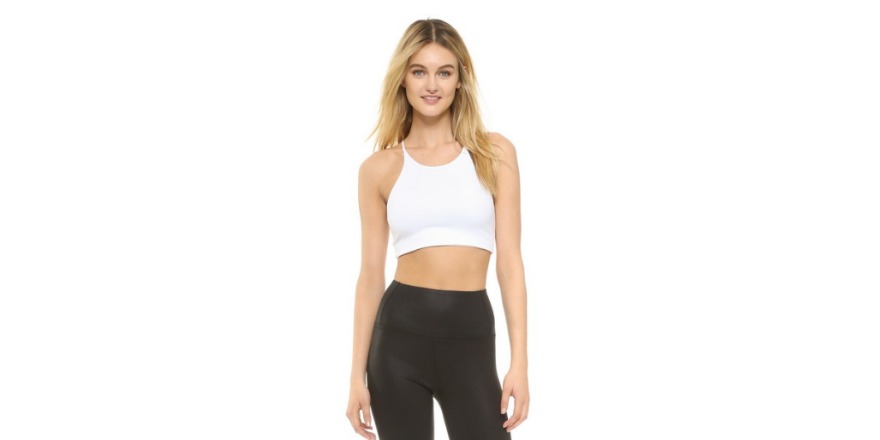In recent years, we've seen a rise in the popularity of crop tops, especially amongst young women. A recent Teen Vogue article on crop tops by Marianne Dabir, stated, ‘If you’re on the fence, trust us: The grass is way greener over here on the short side.’ In late July, New York Magazine’s outfit of the week was a crop top with jeans. Gigi Hadid has recently been crowned the ‘queen of crop tops.’ Vogue dedicated an entire article to Rihanna’s crop top, and similar stories have been published on similar platforms on other fashion forward celebrities, like Kendall Jenner.
Purchase David Lerner Abbie Bralette Crop Top here!
At first, this may seem just like any other fad of the past, such as UGGs or Abercrombie; the reflection of temporary millennial and societal interests, here today and gone tomorrow, nothing more.
While this may be true for the crop top, this particular trend has also, in part, given rise to the bralette trend. Arguably, the bralette trend is an extension of the crop top, as it preserves the same baseline structure, and builds in additional cut-outs.
On the surface, the bralette trend seems similarly temporary. But both trends have much broader implications, unlike many other previous fashion trends. It's become such a phenomenon in the fashion industry that publications like Forbes and the Wall Street Journal have even written full articles on their economic- and business-related impacts.
Namely, both trends share the embracement of clothing that covers less and thus reveals more, which may seem to have a negative connotation. However, a major component of establishing these connotations as negative or positive in the first place is rooted in societal expectations. Consequently, this popular shift toward revealing more could signify an arguably welcome trend of being more accepting of, and simply comfortable with, our bodies. With the trend becoming increasingly universal, it seems to make an empowering statement toward this end.
However, upon further consideration, especially after speaking with some young women on this trend, I’ve come to the conclusion that it can be isolating as well. Specifically, young women find themselves caught between body image concerns and fashion concerns. On the one hand, women feel pressured to conform with fashion trends, but on the other hand, they simultaneously feel pressured to conform with ideals of the ‘swimsuit body type,’ which has recently translated to, without much adjustment, the crop top and bralette body types as well.
Samantha, a rising junior at the University of California Berkeley, highlights this conflict well: ‘I want to wear what’s trendy, which seems, nowadays, to be crop tops, but I don’t feel comfortable showing so much of my body because I am afraid of how other people will fixate and judge: especially silently and in passing. I feel as though, with this trend, the college campus, including the classrooms, dining halls, and lawns, has been transformed into the beach, when it comes to body expectations.”
![]()
It's important to realize that others share our insecurities and sentiments.
![]()
While this is a multifaceted, challenging topic to navigate with no clear answer for the best course of action, it's nonetheless important and helpful to realize that others share our insecurities and sentiments, even if not verbally articulated. The trajectory of society, including in fashion, should be one moving toward more open mindedness, acceptance, and love, which is what we should all strive to do for ourselves and others.
Jessica Li is a rising sophomore at Harvard College, studying economics and computer science. Her main passions include women’s empowerment and business. In her free time, she enjoys food adventures, pilates, and photography.

Comments (0)